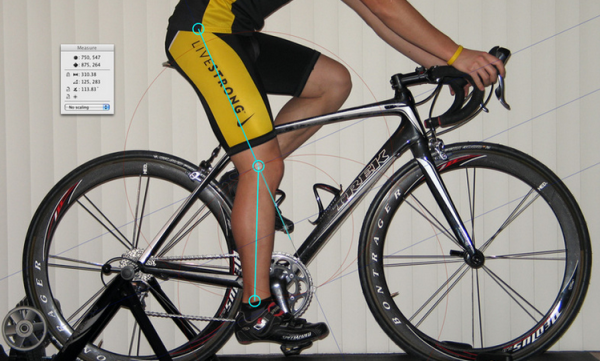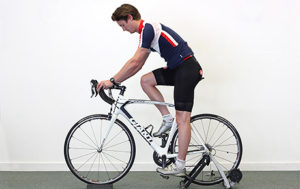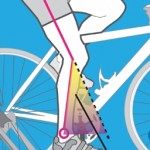It may not seem likely, but something as small as adjusting your seat can have a big impact on your ride. Ensuring that your seat is at the right height will make a difference in how much power you transfer to the pedals, and how much energy you use to move forward.
How you sit on your bike will also affect how comfortable you are, which could affect your enthusiasm level and overall motivation. Not to mention that you can develop injuries if your seat height doesn’t match your body.

How to determine seat height
If you set the seat too low, you will tire quickly and put too much stress on your knees. Set it too high, however, and your hips will rock side to side reaching for the pedals with each stroke. So how do you determine the right seat height for your body?
The Heel Method

The most common way to adjust your seat height is to put your cycling shoes on put a pedal at the 6o’clock position (the bottom). Your heel should barely be able to touch at the bottom when your leg is fully extended. If you can easily reach make your saddle height higher. If you can’t touch the pedal lower the seat.
The above accepted guideline is a rough estimate as it does not take in to account an individuals “style”. For instance, what if you pedal with your toes pointing down? Then you would have to raise your saddle height to take that in to account; conversely, if you drop your heel then you will also have to drop the saddle height.
The 109% Method
Take a level or a book and put it under your crotch and measure from the floor to the top of the level or book and multiply that by 1.09. The resulting number indicates how much distance there should be from the pedal axle to the top of the seat.
This method also has similar inadequacies to the heel method.
The Holmes Method
 The Holmes method was designed to reduce over use injuries and capitalize on efficiency and power, and recommends that you cycle with a knee angle between 25-35 degrees when you are at the bottom of the pedal stroke. In order to measure this angle you will need a goniometer to measure the angle, or you could even use string and a protractor.
The Holmes method was designed to reduce over use injuries and capitalize on efficiency and power, and recommends that you cycle with a knee angle between 25-35 degrees when you are at the bottom of the pedal stroke. In order to measure this angle you will need a goniometer to measure the angle, or you could even use string and a protractor.
Flexible people should be in the 25 – 30 degree range, non-flexible people should be in the 30-35 degree range.
Again as with any particular method they are not tailored to your individual differences and should be taken as a rule of thumb. Ultimately, you need to discover what works for you.
Signs That Your Saddle is Too High
The easiest and quickest way to determine if your saddle height is too high is to have someone watch you pedal on a stationary trainer and watch to see if your hips wobble back and forth caused by reaching for each pedal stroke. If you have any hip wobble follow the above mentioned procedures to find your ideal saddle height.
Additionally, if you have any knee pain in the back of the knee then it may be a result of saddle height being too high.
Signs That Your Saddle is Too Low
If you are having pain under your knee cap or in the front of your knee it may be a result of your saddle height being too low. Also, if you feel like you tire too easily (very difficult to determine) or have a lot of lower back pain then it could also mean your saddle height is too low.
The above methods outline the way to determine the proper saddle height, but remember they are guidelines and there are a lot of factors to consider. Ultimately the ideal saddle height will be determined by your individual needs and style.